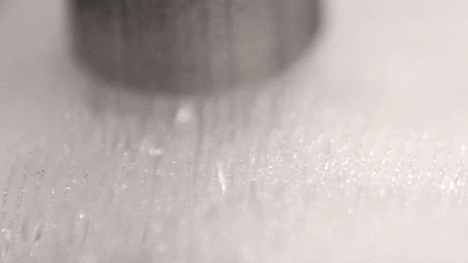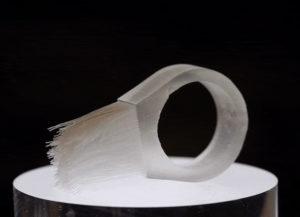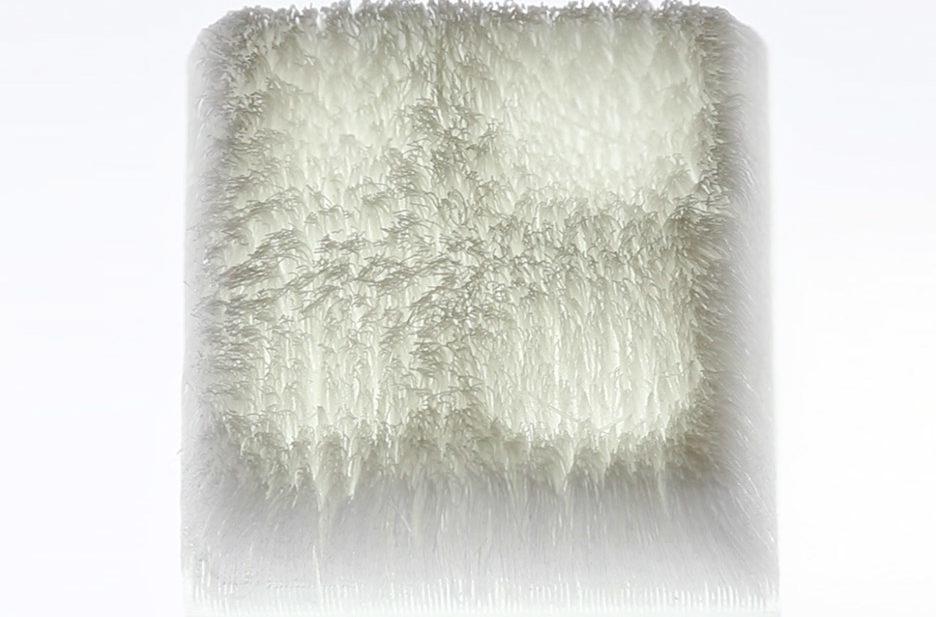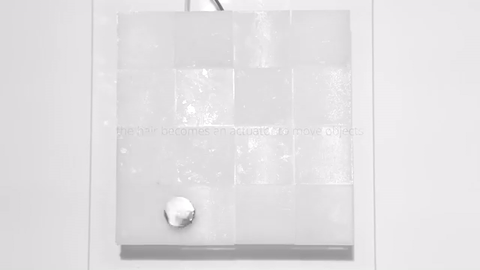Trust me, this is one of those research projects that is actually way cooler than it sounds. Researchers at Massachusetts Institute of Technology (MIT) have developed a method of 3D printing surfaces covered with densely-packed artificial, programmable hairs as thin as 50 microns across. Now I know what you’re thinking, you’re confused as to what exactly 3D printed hair could be used for besides the strangest and most expensive merkin ever made. But it turns out that the ability to 3D print large quantities of tightly grouped micro-structures like hair can be used for a ton of amazing applications that almost sound like a joke at first.
The team of researchers from MIT’s Tangible Media Group developed Cilllia, a computational method of producing extremely fine, 3D printed hair-like structures, and they have found some cutting edge applications for them. What makes the Cilllia technology so remarkable is its ability to artificially reproduce highly-dense, hairy or furry surfaces that were previously only possible in nature. When it has the correct structure, hair is actually a remarkably versatile material that can be used for a surprising number of applications. Cilllia’s 3D printed hair structures and surfaces can be used to produce everything from hairy jewelry, customized paint brushes, gearless motors, movable surfaces, adhesive surfaces and even next generation tactile surfaces.
“3D printers nowadays have potential to change the way we design materials, yet we are still mostly using it to print static objects like plastic cups. We aim to create programmable materials, and hair is just one of the examples we are exploring in our lab now,” says Jifei Ou, a member of the Cillia research team and a PhD student from the Tangible Media Group.
With the Cillia technology, the MIT research team is able to accurately, quickly and easily program each individual hair with very precise geometries and characteristics. By controlling individual characteristics like the direction the hair bends, its length and its thickness, the team can print task-specific physical properties into the hair-covered surface and create innovative and unique functionalities. The 3D printed fur is possible thanks to a bitmap-generating software package that they developed specifically for the project. The software will automatically generate thousands of hair-like strands instantly, without each strand needing to be created individually in 3D modelling software.
“Bitmap generating means to directly create 3D printer-readable files, without going through traditional 3D modelling and slicing process. In Cilllia this is crucial, as hair structure takes an insanely long time to be processed in a CAD software due to its large quantity of surfaces, and creates a super large file that could easily crash any standard slicing program,” Ou told Dezeen.
Cillia can be used to 3D print hair-covered, low-friction materials that will turn any surface covered with them into actuators when exposed to specific vibrations. The hair in these materials will move objects along specific paths that have been built into the geometry of the hair. These vibrating surfaces can also be used to sort various objects by weight and move them along specific, pre-determined paths. Essentially, we can 3D print next-generation, smart conveyer systems than will not only move objects where they need to go, but also automatically sort them, and even point them in specific directions and orientations.
The hair-covered materials can also be used as a rotary motor, a linear motor or a combination of the two. These motors work only by applying specific vibrational frequencies to the materials, and they don’t use any gears or moving parts. The vibrations produced by music could also interact with the material and be used to make “dancing” figurines that can keep a beat. The material can also be used to create touch-control interfaces that assign specific tasks to specific movements. They can even be sensitive enough to determine how quickly the hairs are being brushed, in which direction, and with how much force.
Some of the other amazing applications possible with Cillia is the ability to 3D print paint brushes with customizable strokes so users can paint using intentionally designed patterns. Artificial fur-covered clothing could be made that would have useful properties like the ability to slick water off of its surface rather than let it soak in. And the materials can also be printed with Velcro-like surfaces that will create a strong bond to another surface without the need for adhesive. So instead of putting your cell phone in your pocket, you can just stick it on your fur-covered coat and it will simply stay in place.
Check out this video showing off some of the amazing things that Cillia can make:
The research team presented their Cilllia project at ACM CHI 2016, a conference dedicated to examining the future of human-computer interaction. This year’s event took place from May 7th to May 12th in San Jose, California. In addition to Ou, the team includes Gershon Dublon, Chin-Yi Chen, Liang Zhou, Felix Heibeck and Hiroshi Ishii. How do you see this new technology really making a true impact? Discuss over in the 3D Printed Programmable Hair forum at 3DPB.com.
Subscribe to Our Email Newsletter
Stay up-to-date on all the latest news from the 3D printing industry and receive information and offers from third party vendors.
Print Services
Upload your 3D Models and get them printed quickly and efficiently.
You May Also Like
Consolidation in AM: How 2025 Is Shaping the Industry’s New Normal
The first half of 2025 has been marked by a clear shift in the additive manufacturing (AM) industry. Companies are no longer just focused on developing new tech by themselves....
Etsy Design Rule Change Reduces Selection of 3D Printed Goods
Online marketplace Etsy has implemented a rule change requiring all 3D printed goods on the site to be original designs. The update to the site’s Creativity Standards states, ¨Items produced using...
U.S. Congress Calls Out 3D Printing in Proposal for Commercial Reserve Manufacturing Network
Last week, the U.S. House of Representatives’ Appropriations Committee moved the FY 2026 defense bill forward to the House floor. Included in the legislation is a $131 million proposal for...
Transforming From Tourist to Native: Duro CEO Michael Corr Explains Why the Company Rebuilt its PLM Software on AI
In these early innings of the AI boom, many market analysts have expressed concern that AI spend has gotten too far ahead of the technology’s proven ability to deliver significant...






































